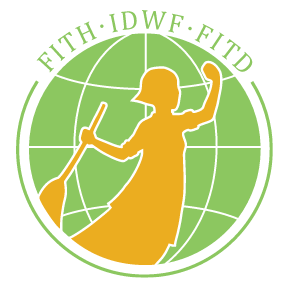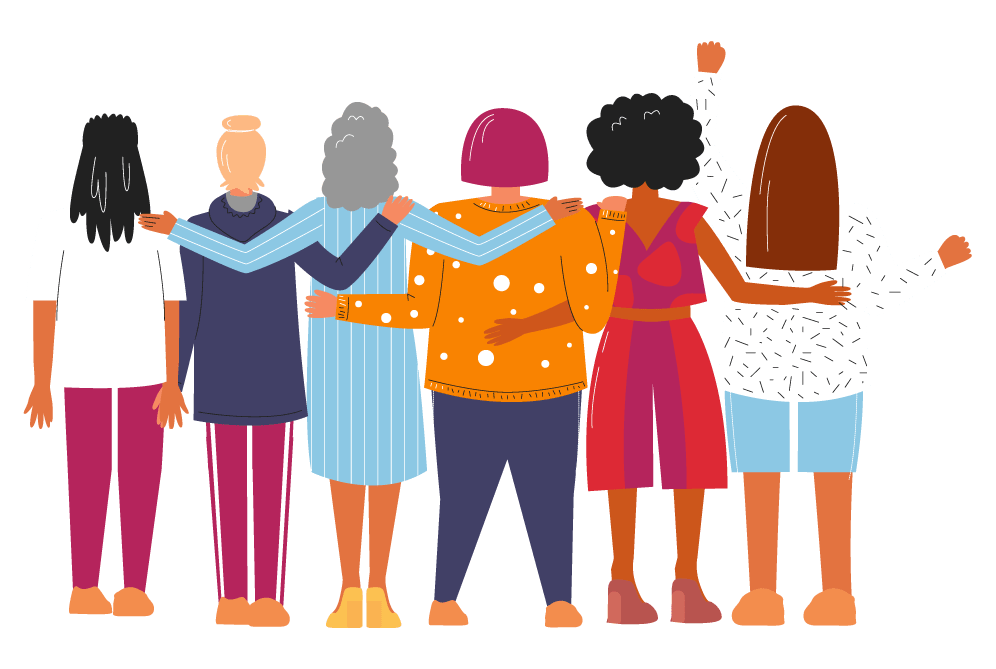As IDWF believes that it is domestic workers that should be the ones telling their stories, we are passing the mic!
For our Congress, stay tuned to receive great coverage of each day, collectively produced by a multi-skilled team composed of 2-3 domestic workers per region together with our communication team.
Each Region of the IDWF has nominated Star Reporters to support the production of our Newscast.
Guidelines for Star Reporters
As part of the journalistic coverage of the IDWF’s International Congress, you will have three key tasks:
- To interview domestic workers’ leaders.
- To produce audiovisual content for IDWF TV and IDWF’s social media.
- To promote materials produced by IDWF among the attendees.
Here are some guidelines to help you perform your role in a professional and enjoyable way.
INTERVIEWS
General guidelines
- Reporters from each region will work as a team and interview colleagues from their own region.
- Interviewees can be: delegates, observers, candidates for leadership positions in IDWF, current members of the Executive Committee, guests (allies, trade unionists, donors). It is advisable to keep a balance so that all voices are represented in our newscast.
- You can conduct two types of interviews:
- Aimed at gathering specific information about the activities and topics discussed during the day.
Sample questions:
- What resolution was passed during the session and why is it important?
- How did the voting process unfold? What are the results?
- What have been the highlights of the workshop on Care/migration?
- As a new member of the IDWF’s Executive Committee, what is your commitment to the Federation?
- Aimed at capturing impressions and feelings from affiliates.
Sample questions:
- What does participating in the Congress mean to you?
- Is this your first time at an IDWF’s congress? How would you describe this experience?
- Why do you think this congress is important?
- What do you believe you can contribute to this congress through your role as a delegate?
Technical instructions
- Each regional team should conduct 4 interviews per day during the breaks.
- Each interview will consist of only 1 question.
- Each interview should last approximately 1 minute (inform the interviewees that their responses should be brief and to the point).
- One of the two reporters on the team will act as the “videographer”: she will record the interview with her cellphone in a landscape position and at a distance of 1.5meters, or so that the interviewee and the reporter show within the camera torso upwards.
- The other reporter on the team will be the interviewer: she will briefly introduce the interviewee (their first and last name, organization, country and region, role at the congress), ask the question, thank them and say goodbye once the answer is delivered.
- Reporters on the same team can alternate their roles, sometimes acting as videographers and sometimes as interviewers.
PRODUCTION OF AUDIOVISUAL CONTENT
General guidelines
In addition to conducting interviews during the breaks, you will have the responsibility of taking photos and recording videos during:
- The congress sessions
- Recreational moments (outing, welcome and good-bye dinners, informal gatherings among colleagues)
- The launch of the book about our founding mother, Myrtle Witbooi.
The goal of this activity is to capture the highpoints of the congress with pictures and videos that will later be published through our newscast and on social media.
Your role as “chroniclers” will be crucial in documenting moments that no one could capture better than you, the true protagonists of the congress.
Technical instructions
What you need to remember while taking pictures/video:
There are many things you can do to click better pictures, but here are some things to keep in mind as you begin your journey as a photographer: lighting, composition and subject.
- Lighting:
Good lighting is very important; it is also something you can play around with. The brightness settings, the place for the source of light, the presence of shadows, can determine how light makes your picture.
- Using the natural light from the sun is always a good idea.
- If you are taking pictures with your phone, you can adjust the lighting by tapping on the screen where your subject is. Move the “sun” from left to right or up and down to manage brightness.
- Some phones also have a flash that can help add lighting in dimly lit settings, but taking pictures with the flash doesn’t always capture all details, so remain mindful of that.
- When you don’t have natural lighting from the sun, you can also try to find places indoors with bright lights. Move your subjects underneath whatever light sources are handy and see how they look with your eyes.
- Composition:
Before taking a photo or video, take a minute to look at your scene through the camera. Make sure you don’t have anything in the picture you don’t want, such as, for example, a pole coming up behind someone’s head or a messy table in front of an otherwise nice portrait. For the most part, hold the camera level, look for horizontal lines in your scene and use those as a guide when shooting.
Another way to play with framing is changing the way in which you click a picture. If you take a picture horizontally, it can capture a wider background around your subject. But, if you take a vertical picture, it feels like the subject is closer.
- Subject:
Before you start, tell your subject that your first few shots are just to test the light…the thought that this is not the real shot relaxes them. It often turns out that this shot is the best! Some subjects take a while to get used to having their picture taken, so worry if the first ones don’t work.
Photos:
- Take as many photos as you want. Remember, photography tells a story!
- Not everything has to be serious. In addition to the regular documentation, photos can be as silly and/or as creative as you want! We want to capture the soul of the Congress, not just the activities.
Videos:
- Each regional team should tape 2 B-Rolls. What is a B-Roll? It is a short video that shows the big picture or some small details, and will be used in the newscast to transition from one section to another.
- Horizontal Format (Landscape): This will be used as additional footage in any IDWF production related to the congress. At the end of the day in the newsroom, this footage is collected.
HOW TO SHARE FILES WITH IDWF’S COMMUNICATIONS TEAM
- B-Rolls and Interviews should be shared in our WhatsApp group during the day on a rolling basis. They should be accompanied by a brief description (see below how to write a description)
- Photos should be shared at the end of the day in our newsroom (we will collect and save them in a hard drive). Please take notes for yourselves while taking pictures for further classification purposes (for example: session on migration, election of ExCo members, outing to Bruges, etc.)
Description for B-Rolls and Interviews:
- Who/what is in the video?
- What moment/activity is captured in the video?
- Any additional information you consider important to share? (optional)
Here are some examples:
- Delegates from Africa working on Resolution Nº xxx on diversity. Session devoted to the adoption of resolutions. Optional additional information: Resolution xxx was passed by a majority; there was an intense debate about xxx point, etc.
- Affiliates from Latin America visiting the medieval city of Bruges.
- Affiliates from the MENA and Europe regions sharing experiences on social protection. Resolution session. Optional additional information: affiliates agreed on the need to champion social protection for migrant domestic workers.
- Flags of our affiliates decorating the meeting room. Optional additional information: our affiliates have displayed more than xxx flags in the congress meeting room.
Interviews:
- Information about the interviewee: first and last name, organization, country, role at the congress (delegate, observer, member of the Executive Committee, ally, guest, etc.).
- Interview topic (what the interviewee has talked about).
- Highlight (optional)
Here are some examples:
- xxx, delegate from xxx (organization), from xxx (country), talks about the approved resolution on xxx (topic) and highlights the importance of this resolution for…
- xxx, a member of IDWF’s Executive Committee, from xxx (organization), from xxx (country), tells us what being part of the ExCo has meant to her over the last 5 years.
- xxx, who is running to represent the Caribbean on IDWF’s Executive Committee, from xxx (organization), from xxx (country), shares with us her expectations and goals if elected.
- xxx, a representative of our allied organization xxx, from xxx (the person’s country), stresses the importance of this congress for our allies.
PROMOTION OF IDWF’S MATERIALS AMONG ATTENDEES
Each region has selected 3 publications to showcase at the congress.
During our training the day before congress, each regional team will be asked to record themselves describing what the publication is, and inviting people to visit our website.
You will also be given flyers with the QR code of these publications to share with allies.
DAILY WORK PLANNING
We will meet every day at the end of the session in our “newsroom” to plan the work for the following day, evaluate how the working day has been, and discuss our concerns and needs.
The meeting place and time will be provided during our workshop in Belgium.
WORKSHOP IN BELGIUM
On October 1st, we will meet in our newsroom for a brief preparatory workshop where we will learn more, practice and address any questions.
Feel free to share your ideas and proposals with us. You can start working on them now!
PRE-CONGRESS MEETING
In the next few days, we will invite you to a Zoom meeting for the members of the team to get to know each other, start working together, ask questions, and raise any doubts.
Thank you very much for your commitment and enthusiasm!
To get in touch with the IDWF TV team, please contact our Fernanda Valienti, Media Officer: [email protected] / +54 9 11 5124 5992.


